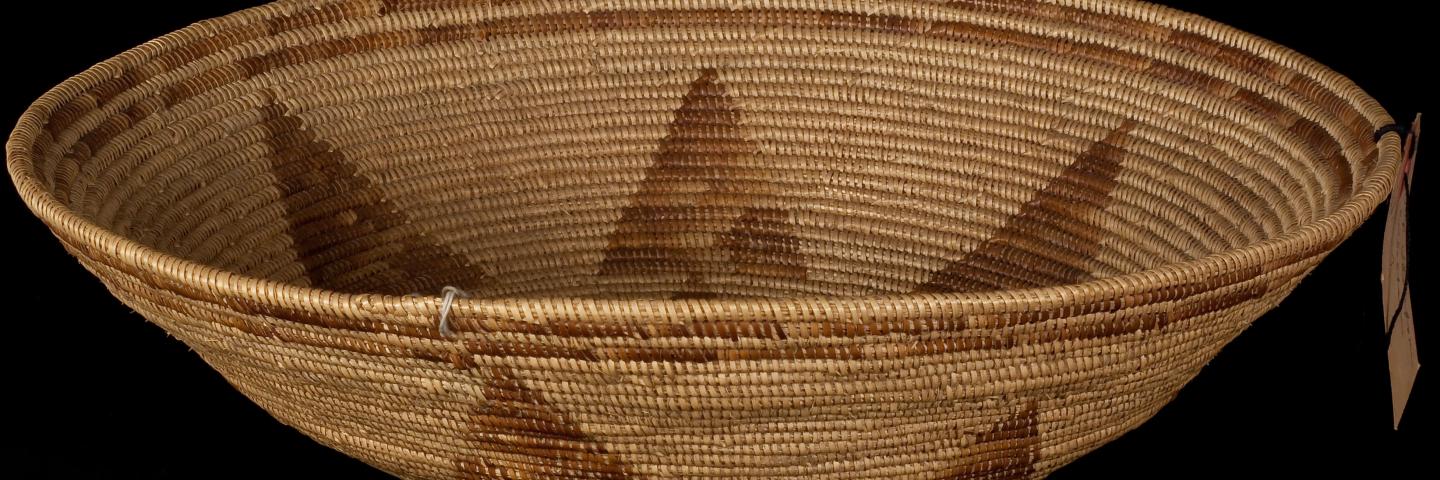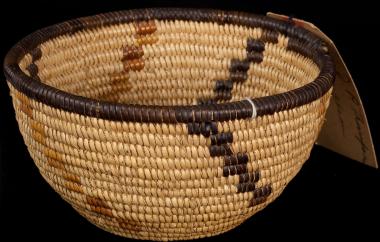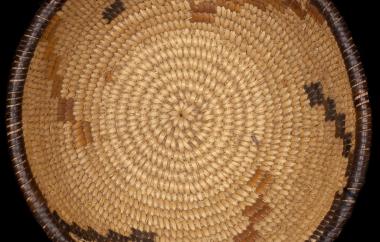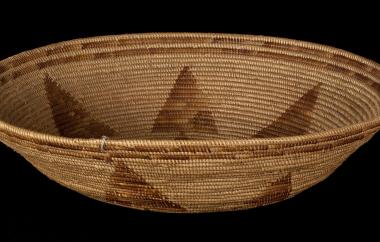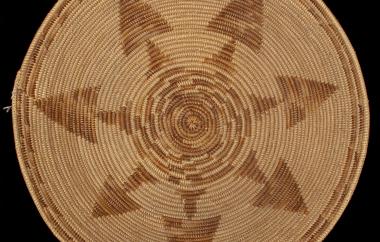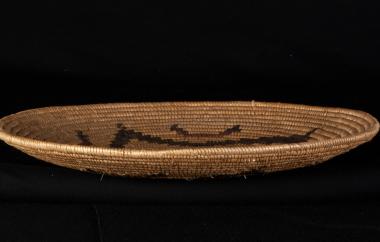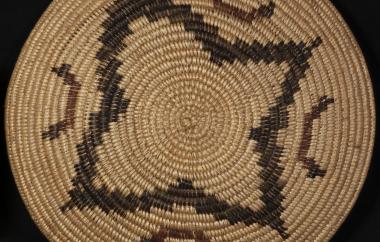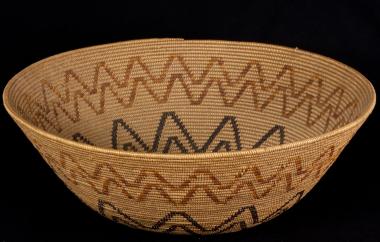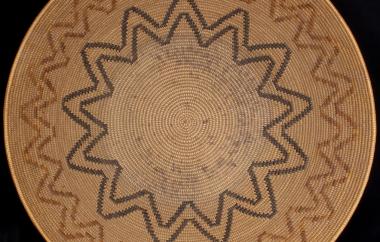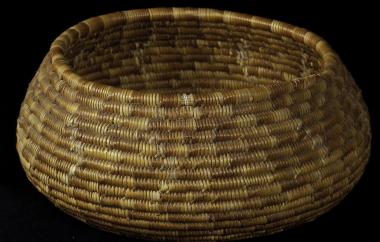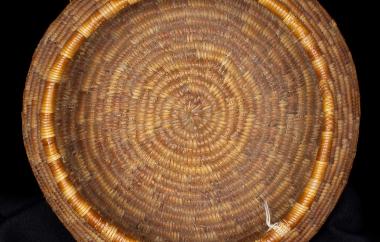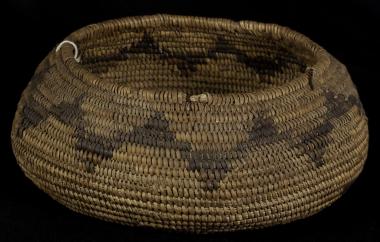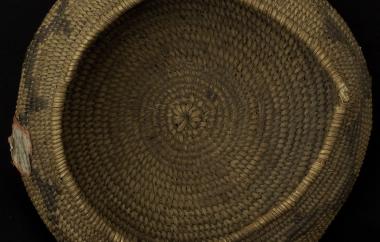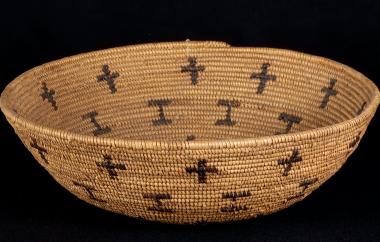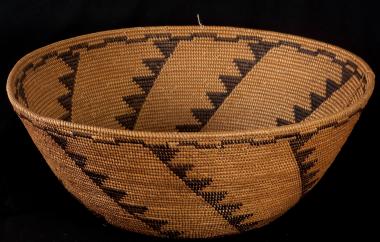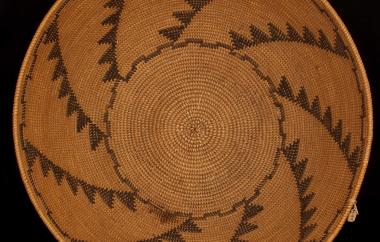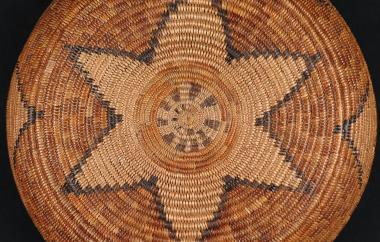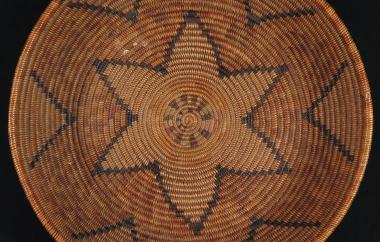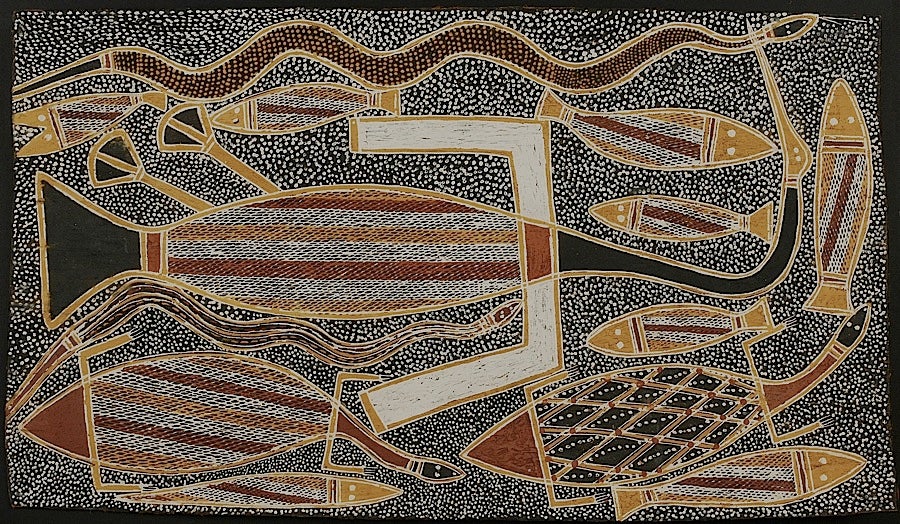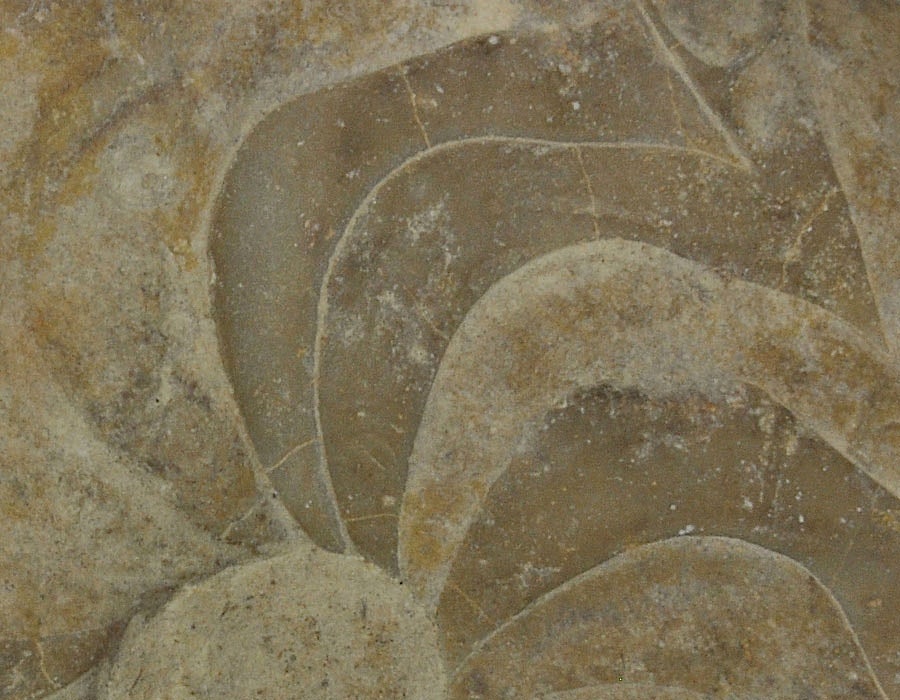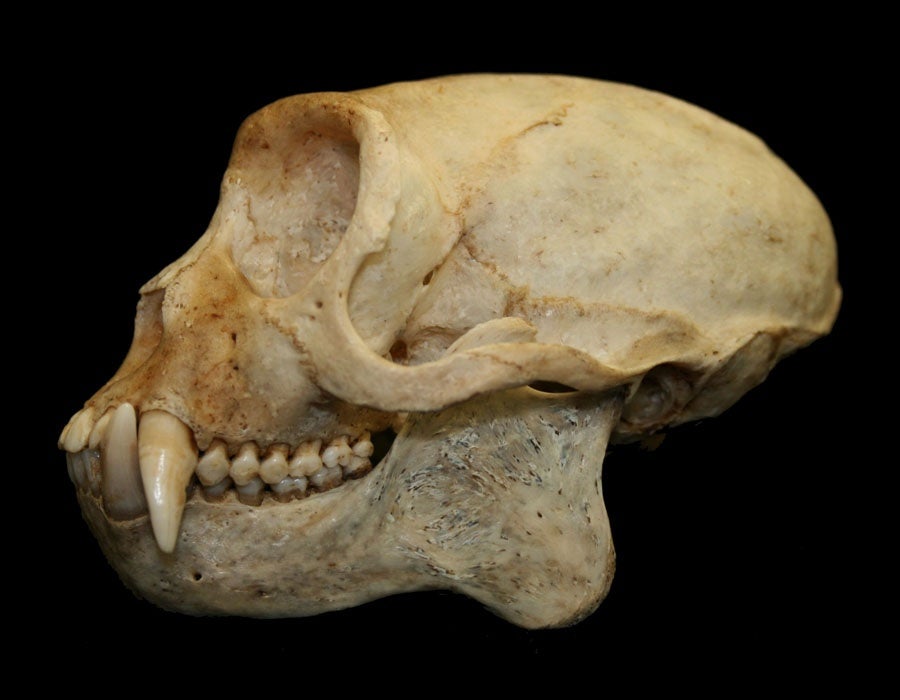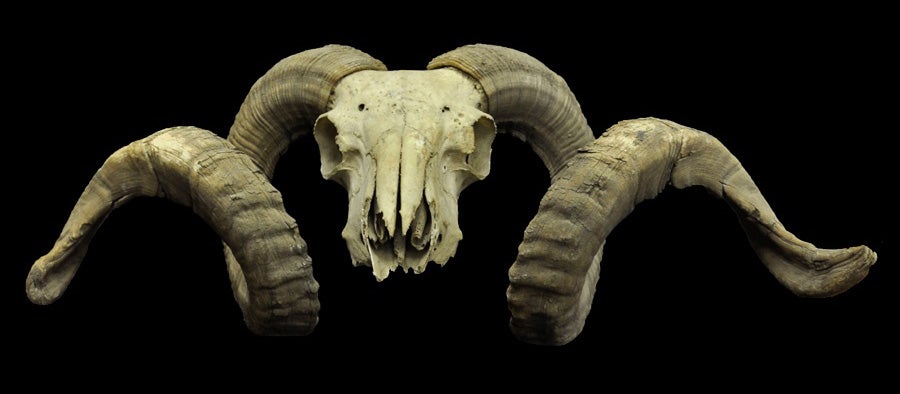Native American baskets from the Southern California region, and sometimes greater California, are often referred to as “mission” baskets. The term “mission” was first designated by A.L. Kroeber in 1922 in reference to a style of baskets made by people subjugated under the Franciscan mission system, c. 1769-1834. As Art Historian Yve Chavez (Tongva) points out, this term effectively compresses the discrete artistic traditions of a number of Native peoples into a single overarching group. Chavez explains that basketry traditions of all Southern California Tribes existed prior to and after the mission period, making the designation of one period in a long history of traditions arbitrary. Some argue that the “mission” designation refers to the concept of hybridization of traditions, as Southern California peoples were forcibly moved around, coming into contact with each other and being exposed to different ideas. However, Chavez notes that the hybrid concept implies that these baskets are somehow lesser than those stemming from their “pure” parent traditions, and ultimately privileges external and imposed definitions of progress.
Use of the misleading term “mission” has persisted in museum catalogs and records of basket collections dating from the late 19th through the mid-20th century. The Southern California basket collection showcased here has been no exception. Ideally, a basket should be attributed to its weaver or to a specific Tribe or band, if known. Unfortunately, due to the collecting practices of the era, our documentation of these baskets does not include such information. As an alternative, “mission” style baskets at the Museum of Natural and Cultural History are attributed to Southern California Native peoples, unless more specific information can be gleaned from the baskets themselves.
Baskets from Southern California Native peoples generally share a number of common elements in technology and structure, with a range of types and uses. These baskets are often coiled with a knot sewn into the center for the start. They feature a rightward work direction, outside work faces on most baskets, inside work faces on trays, non-interlocking stitches, moving ends clipped on the non-work face or hidden in the foundation, and folded weft splices visible on the work face. Commonly used materials are deergrass, sumac, and Juncus sp. Other materials include yucca and palm. Baskets had many uses in processing of acorns and small seeds. Flat or shallow trays were used to parch seeds with hot coals, winnow off the chaff, and sift pounded acorn flour before leaching. Deeper baskets were used for storage and many other uses including gifts and for sale to non-Native markets.
In general, it is difficult to discern specifically which Southern California group made a basket, though the particular plant species used may provide clues. The baskets shown here represent all of our baskets from Southern California Native peoples and are attributed in their origins as specifically as possible, based on their characteristics.
Text by Allison Fischer-Olson with contributions by Margaret M. Mathewson. Images © UO Museum of Natural and Cultural History.
Further Reading:
Chavez, Yve
2012 Indigenizing Southern California Indian Basket Studies: Unpacking Issues of “Mission” and “Tradition.” Masters Thesis. On file at University of Washington.
2017 Indigenous Artists, Ingenuity, and Resistance at the California Missions After 1769. Dissertation. On file at University of California, Los Angeles.
Farmer, Justin F.
2008 Southern California Luiseño Indian Baskets: A Study of Seventy-six Luiseño Baskets in the Riverside Municipal Museum Collection. Justin Farmer Foundation.
Zamora, Myra Masiel
2017 Payómkawichum Pomtúkmay: Baskets of the People of the West. Great Oak Press. Pechanga, CA.
Catalog #2-20040
Basket.
Southern California, interior. Juncus sp., sumac, deer grass. Received 2023.
7cm high x 27.5cm diameter
Catalog #2-20040
Basket, interior.
Southern California, interior. Juncus sp., sumac, deer grass. Received 2023.
7cm high x 27.5cm diameter
Catalog #2-2176
Bowl-shaped basket, exterior.
Southern California, inland peoples. Yucca, deer grass, sumac, Juncus sp. Received 1943, collected ca. 1900.
5cm high x 11.5cm diameter
Catalog #2-2176
Bowl-shaped basket, interior.
Southern California, inland peoples. Yucca, deer grass, sumac, Juncus sp. Received 1943, collected ca. 1900.
5cm high x 11.5cm diameter
Catalog #2-2184
Basket tray.
Southern California, inland peoples. Deer grass, sumac, Juncus sp. Received 1943.
8cm high x 27cm diameter
Catalog #2-2184
Basket tray, interior.
Southern California, inland peoples. Deer grass, sumac, Juncus sp. Received 1943.
8cm high x 27cm diameter
Catalog #2-2185
Basket tray.
Southern California, inland peoples. Sumac, deer grass, Juncus sp., yucca. Received 1943.
6cm high x 32cm diameter
Catalog #2-2185
Basket tray, interior.
Southern California, inland peoples. Sumac, deer grass, Juncus sp., yucca. Received 1943.
6cm high x 32cm diameter
Catalog #2-2186
Basket tray.
Southern California, inland peoples, Northeastern edge of region, possibly as far as “Tejon Ranch” area. Yucca, deer grass, Juncus sp. Received 1943.
3cm high x 30.5cm diameter
Catalog #2-2186
Basket tray, interior.
Southern California, inland peoples, Northeastern edge of region, possibly as far as “Tejon Ranch” area. Yucca, deer grass, Juncus sp. Received 1943.
3cm high x 30.5cm diameter
Catalog #2-2189
Seed toasting basket.
Southern California, inland peoples. Deer grass, sumac, Juncus sp. Received 1943.
13cm high x 40cm diameter
Catalog #2-2189
Seed toasting basket, interior.
Southern California, inland peoples. Deer grass, sumac, Juncus sp. Received 1943.
13cm high x 40cm diameter
Catalog #2-3129
Globular basket.
Southern California, inland peoples. Yucca, deer grass, Juncus sp., sumac. Received 1948.
7cm high x 19cm diameter
Catalog #2-3129
Globular basket, interior.
Southern California, inland peoples. Yucca, deer grass, Juncus sp., sumac. Received 1948.
7cm high x 19cm diameter
Catalog #2-6781
Globular basket.
Southern California, coastal peoples. Deer grass, Juncus textilis, sumac. Received 1939. Probably collected between 1894 and 1903.
6.5cm high x 17cm diameter
Catalog #2-6781
Globular basket, interior.
Southern California, coastal peoples. Deer grass, Juncus textilis, sumac. Received 1939. Probably collected between 1894 and 1903.
6.5cm high x 17cm diameter
Catalog #2-6873
Basket, tray.
Southern California, possibly Cahuilla or other inland people. Sumac, grass, Juncus sp. Collected ca. 1900, originating from Soboba, Redlands, California.
8cm high x 27cm diameter
Catalog #2-6873
Basket tray, interior.
Southern California, possibly Cahuilla or other inland people. Sumac, grass, Juncus sp. Collected ca. 1900, originating from Soboba, Redlands, California.
8cm high x 27cm diameter
Catalog #2-6879
Basket.
Southern California, inland peoples. Deer grass, sumac, Juncus sp. Received 1939. Probably collected between 1894 and 1903.
17cm high x 44cm diameter
Catalog #2-6879
Basket, interior.
Southern California, inland peoples. Deer grass, sumac, Juncus sp. Received 1939. Probably collected between 1894 and 1903.
17cm high x 44cm diameter
Catalog #2-18785
Basket tray.
Southern California, Riverside and Orange County, possibly Cahuilla, Cupeño, or Serrano.
Juncus sp., sumac, deer grass. Received 2014.
8.5cm high x 36.5cm diameter
Image removed due to ongoing NAGPRA consultation.
Catalog #2-18785
Basket tray, interior.
Southern California, Riverside and Orange County, possibly Cahuilla, Cupeño, or Serrano.
Juncus sp., sumac, deer grass. Received 2014.
8.5cm high x 36.5cm diameter
Image removed due to ongoing NAGPRA consultation.
Catalog #2-19474
Basket tray, exterior.
Southern California. Sumac, Juncus sp., yucca. Received 2016.
6.5cm high x 33cm diameter
Catalog #2-19474
Basket tray, interior.
Southern California. Sumac, Juncus sp., yucca. Received 2016.
6.5cm high x 33cm diameter
